Martin Hribek
teaches Bengali at the Faculty of Arts in Charles University in Prague. Martin has spent a total of three years in Kolkata, living at various times, in Shibpur, Jodhpur Park and New Alipore.
He speaks fluent Bangla and even uses the right words for things that most of us have lazily begun to refer to in English (like ‘Ministry of External Affairs’).
He was kind enough to give me a tour of some of Prague’s most famous landmarks
– and in Bangla at that.
On the way to the Hradcany quarter of the city, Martin explained that Hradcany means ‘prasad-para’ (‘palace-neighbourhood’).
The name is certainly apt
– there can’t be many places with a greater
concentration of palaces,
churches
and
monasteries.
Martin told me that the proliferation of religious buildings is a little misleading: apparently the Czech Republic is second only to Albania in the number of self-identified atheists (close to half the population).
This might explain why this much-rubbed statue
serves as the dwara-pala of a children’s museum.
St Vitus’s Cathedral is at the centre of the Hradcany.
On the way there Martin pointed out a plaque with a prominent mis-spelling.
He said that the master-builder who had built it had not been properly paid, so he had taken revenge on his patrons by leaving out one crucial letter, the second ‘n’ in ‘Anno’. Martin informed me that this had changed the meaning of ‘Year of our Lord’ to ‘Debotar ‘Anus’’.
St Vitus’s Cathedral, Martin said, had taken six hundred years to build, being completed only in the 1920s. Nearby is the palace
in which the Czech Republic’s current president, Vaclav Klaus lives. He is a climate-change denier, an Eurosceptic and a camp-follower of the American far-right. I didn’t meet anyone who had a good word to say about him.
Martin told me that Prague has a rich history of Indology. Sanskrit was taught in the city’s German University as early as 1850. From the 1880s onwards it was taught also at Charles University, the city’s oldest and most famous seat of learning, founded in the 14th century.
Modern Indian languages have been taught in Prague since the 1920s, and Bengali has been prominent amongst them. Tagore visited the city twice, in 1921 and 1926. Martin has written a piece about his visits titled ‘Rabindranath’s Tagore Czechoslovak Connection.’
Today Bengali does not have many takers in Martin’s university – he has only one student. Hindi and Tamil are more popular. Martin told me that one of his professors, Dr. Jaroslav Vacek, is a Sanskritist and a scholar of Tamil as well.
After the Prague Spring, for some reason that can only be described as Kafkaesque, he was ordered to learn Mongolian languages as well. He complied, and in the process he discovered some very striking similarities between Tamil and the Altaic languages. This is now his main area of interest.
I was reminded of Sumathi Ramaswamy’s book The Lost Land of Lemuria (see my post of 21 Sept, 2011, Letter from Lemuria) – a fascinating account of the apocryphal ‘Lemuria’ and the place that it once occupied in the imagination of some Tamil writers and scholars. Why, I wondered, had they never looked northwards, towards Mongolia with all its great Khans?
I know of only one Indian writer who had lived in Prague.
 He was the late Nirmal Verma, a towering figure in contemporary Hindi literature – his first novel Ve Din, was set in Prague. I used to visit him in his flat in Delhi, in the 1980s, and he would tell stories about his Czech days.
He was the late Nirmal Verma, a towering figure in contemporary Hindi literature – his first novel Ve Din, was set in Prague. I used to visit him in his flat in Delhi, in the 1980s, and he would tell stories about his Czech days.
I was hoping to meet people who had known him in Prague. Unfortunately that didn’t happen, but Nirmal’s memory was with me all the time that I was walking these streets.
I was glad to learn that many of Nirmal’s books have been translated into Czech. His translator is Dagmar Marková, who has also translated Rajendra Yadav, Mohan Rakesh and Kamleshvar.
Many works of Sunil Gangopadhaya – another writer I greatly admire – have also been translated into Czech, by Hana Preinhaelterová. She is the author of the textbook that Martin uses to teach Bengali. He tells me that it is an excellent textbook except for a few words that are a little out of date. Such as? He cited ‘biliti-begun’ the literal meaning of which is ‘British brinjal/aubergine/eggplant’.
Martin was not surprised that I did not know what this referred to. He said that many shopkeepers in Kolkata had also been astounded to learn that tomatoes were once known as British-brinjals.
Charles university is very impressive.
Right opposite the main building is the theatre where Mozart’s Don Giovanni, my favourite opera, was first performed.
It was interesting to speak about ‘In An Antique Land’, a book that began with fragments recovered by Central European scholars like Ignaz Goldziher and Shlomo Dov Goitein, in the oldest of central European universities.
It was just as interesting afterwords to sample some of central Europe’s finest products, with scholars of Bengali, Altaic and Romany.
As we clinked glasses Martin further enriched my Bengali vocabulary:
‘cheers’, he said, has now been replaced by ‘ullash’.

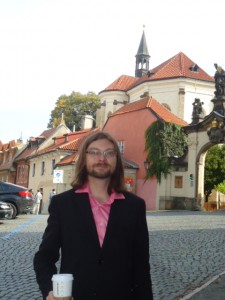




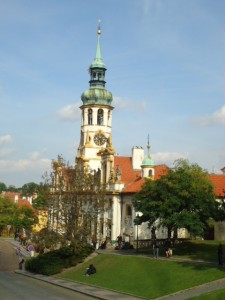

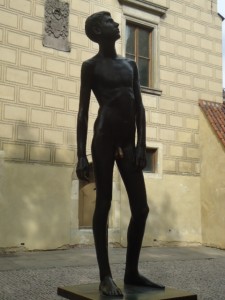
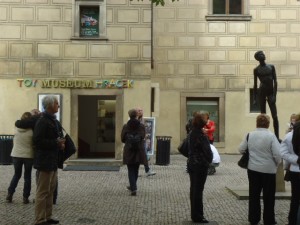
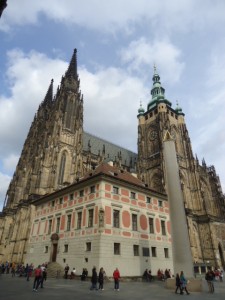

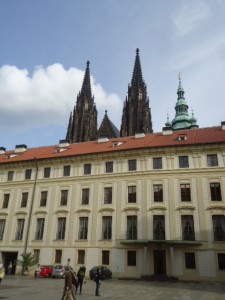
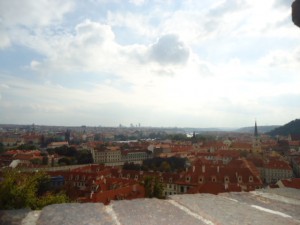
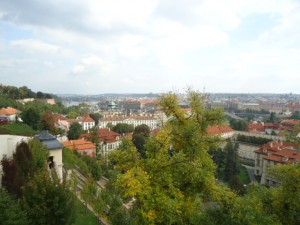
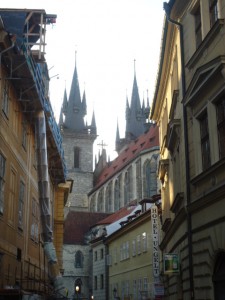


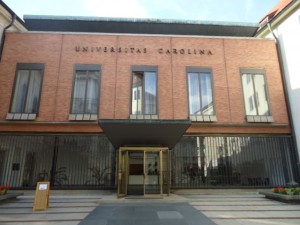


Dear Dr. Amitav Ghosh,
My name is Jaydip Das Gupta. I am a resident of Cleveland, Ohio, USA. I am desperately, desperately looking for someone at Prague who can be helpful and can speak in Bengali as well. I came to know about Dr. Martin Hribek from your website. But I cannot find any contact information about him. I would be highly obliged if you can provide me some information about him.
This is an extreme serious issue of my elder brother’s life and death situation after a chemical plant accident at Czechoslovakia, so we are in desperate search of someone at Prague.
Any contact information of any other Bengali person there would also be very helpful.
Can you please provide me your email address where I can contact you and explain the situation in detail?
Thanks a lot,
Dr. Jaydip Das Gupta
Email: dasgupta6616@sbcglobal.net
I have already passed on your message to Dr Martin Hribek. I am sure he will be in touch.
best
A
It is a pleasure meeting Martin, energetic youngman, very polite and ever smiling ! A wonderful host and fantastic hard worker !
Dear Dr Ghosh,
It’s a pleasure to be here on this page . I have read and admired your fiction and non fictional works. We have introduced The Glass Palace in the SAARC paper at the Master’s level and I teach this novel.
Coming to my point. There’s a reference here to Nirmal Verma which interests me. I have read, translated and published a few of Verna’s stories and have been recently commissioned by a publisher in New Delhi to translate one of his memoir-travelogues into English. Most of the essays in this work deal with Prague. Verma had stayed in Czechoslovakia for about 10 years on a translation assignment during the 1960s.
I am looking forward to a visit to Prague before I start my work. Could you please put me in touch with someone at the University who could help me with this?
Best regards,
Madhu Singh
Lucknow
Dear Madhu: You could try writing to some of the people I’ve mentioned in this post. I am sure their email IDs will not be hard to find.